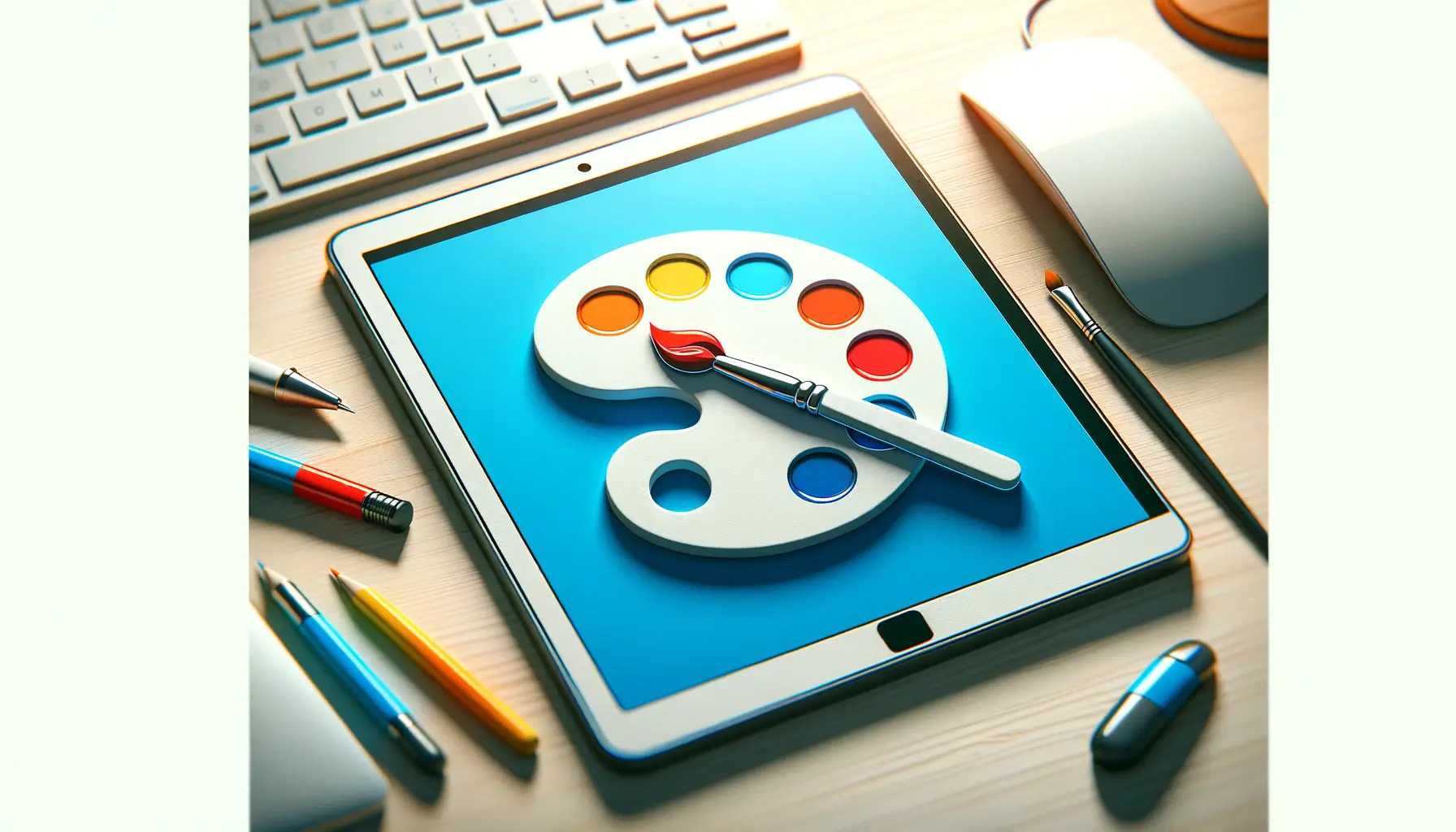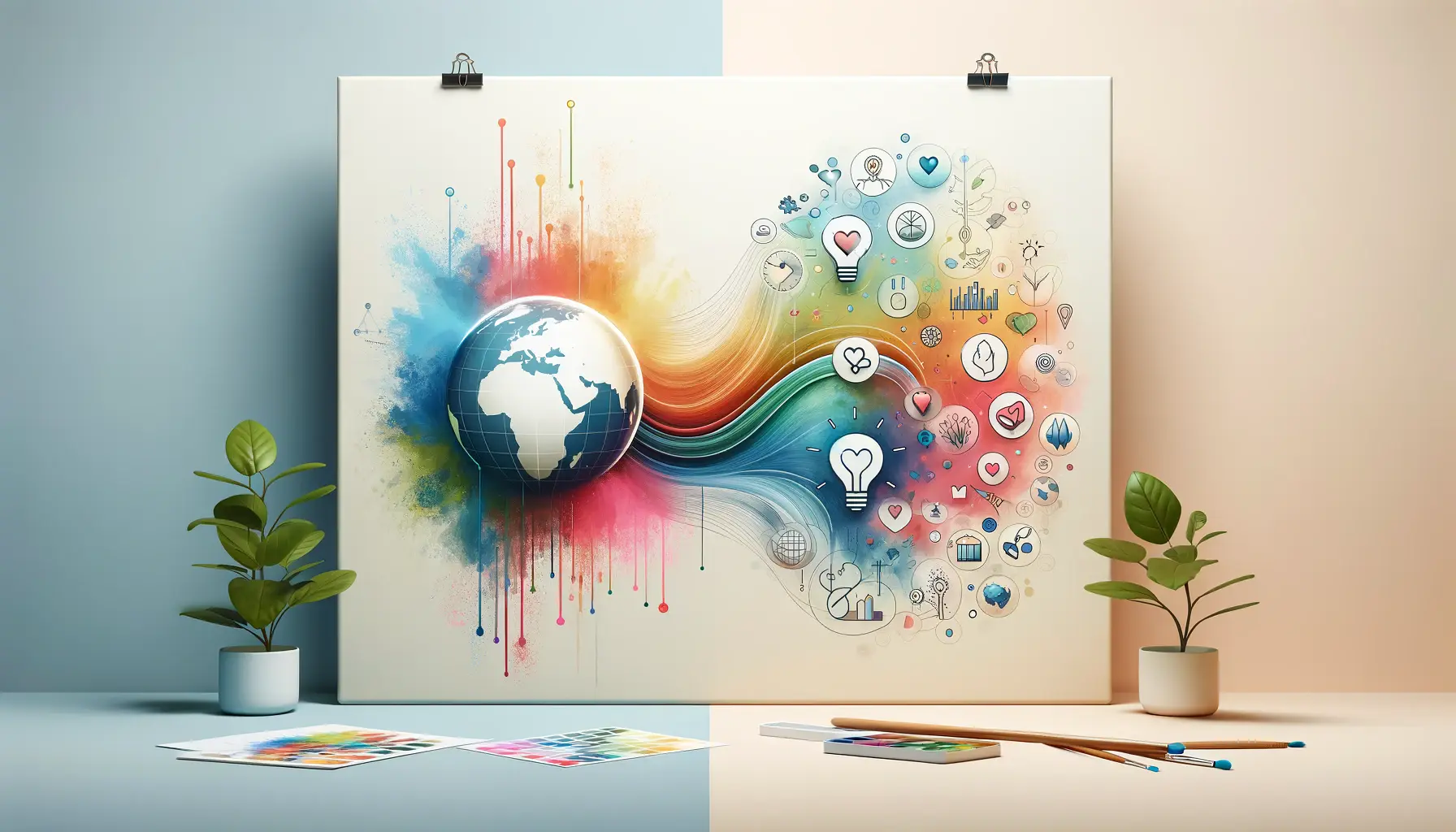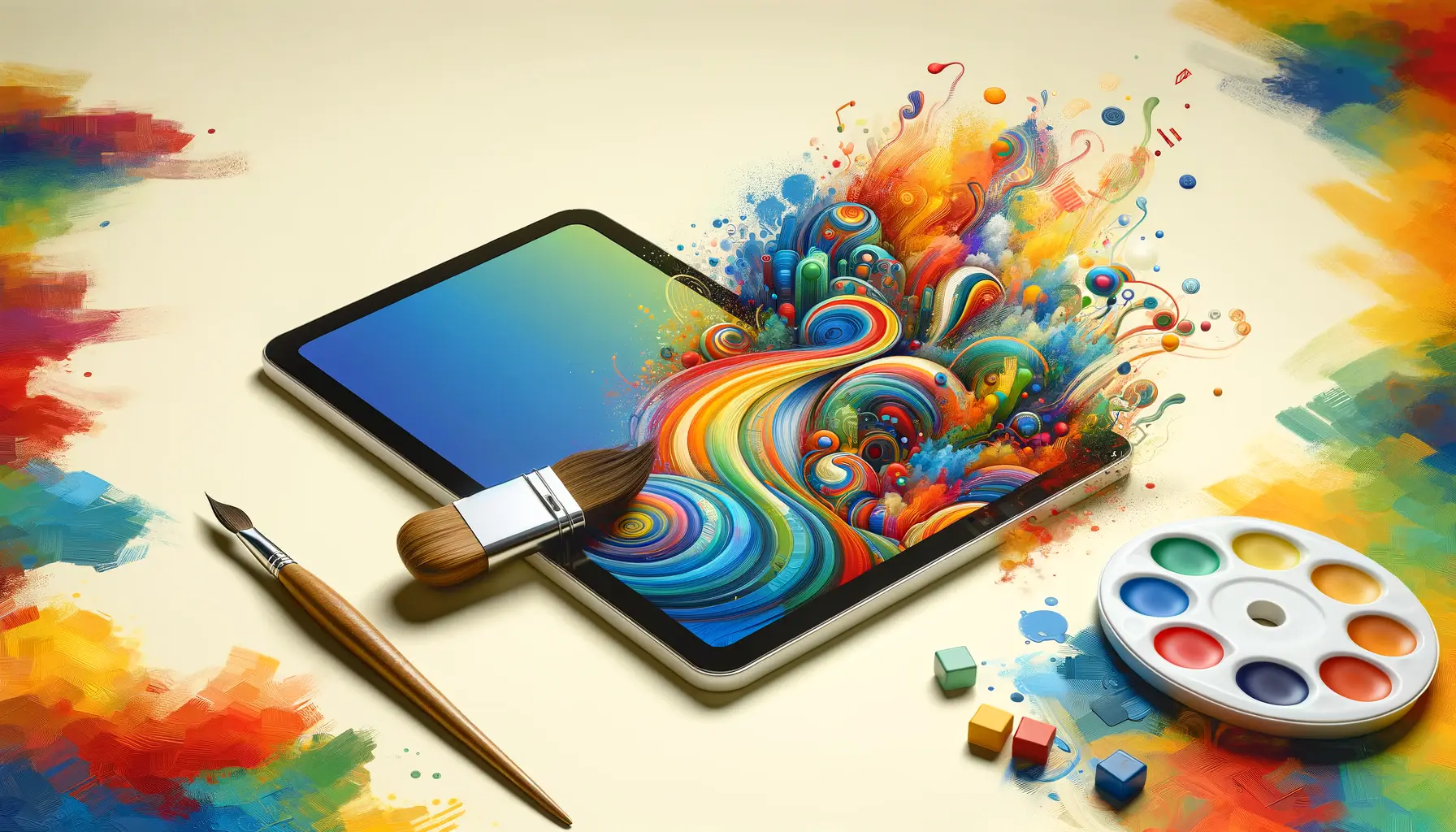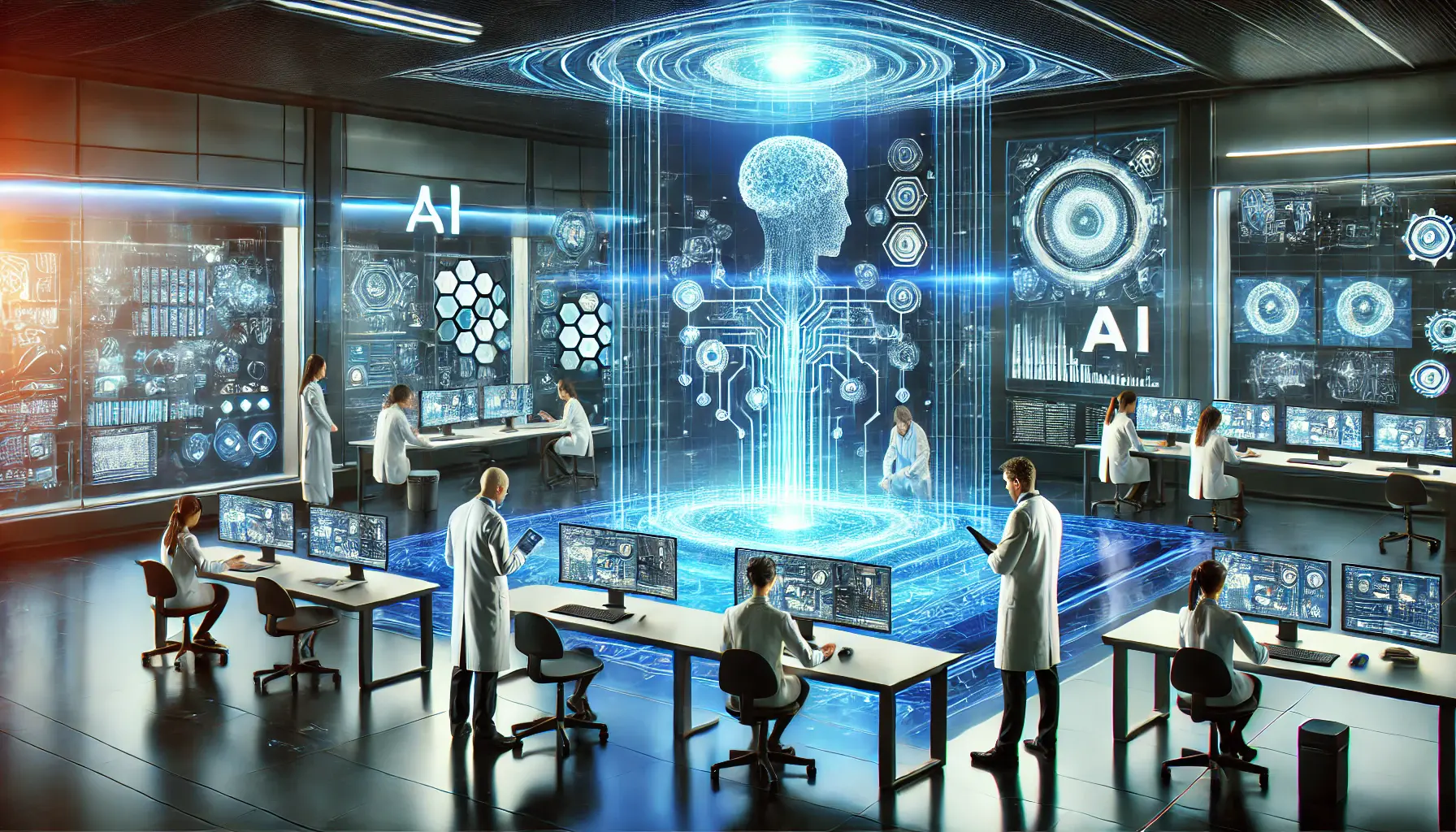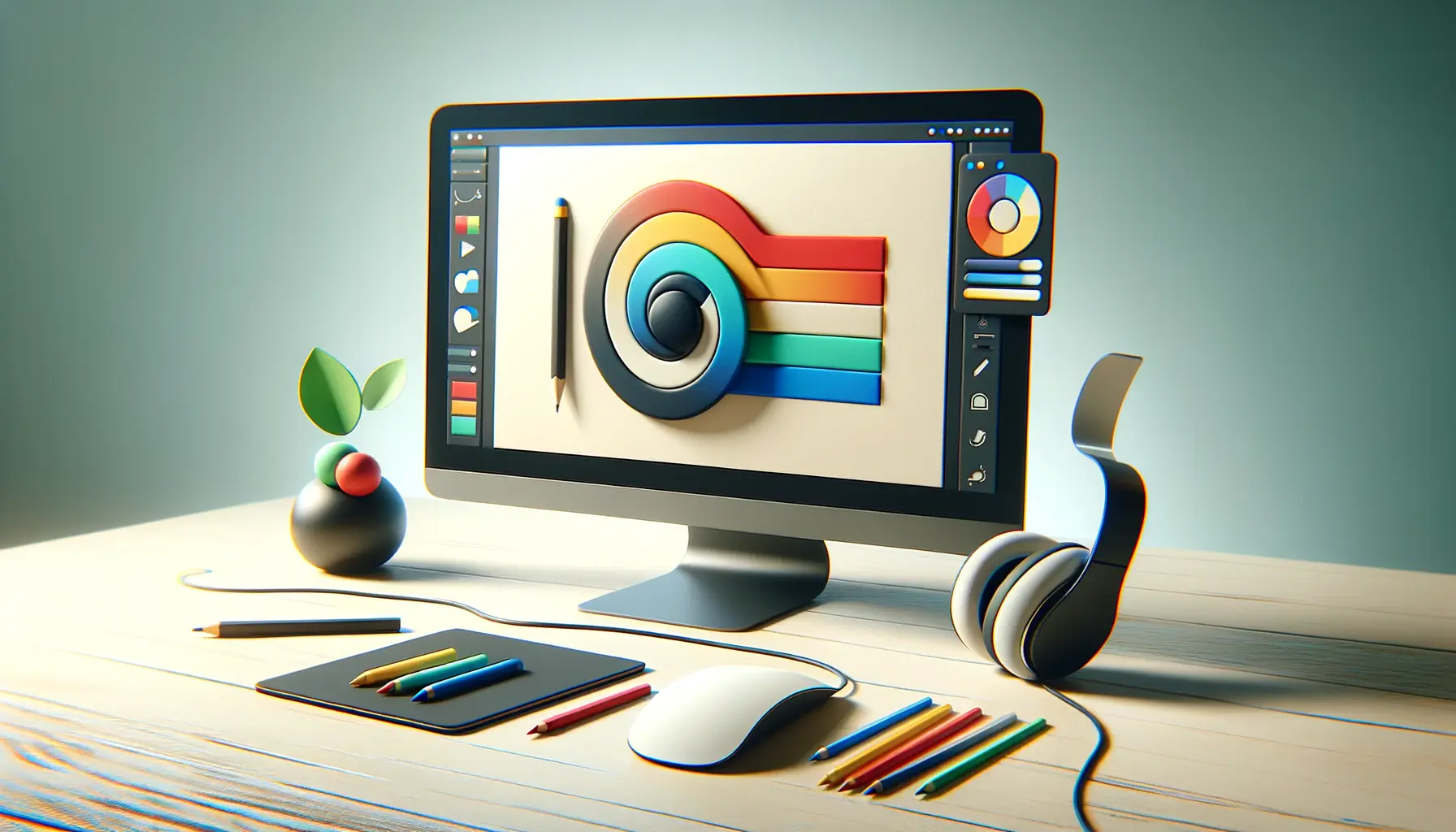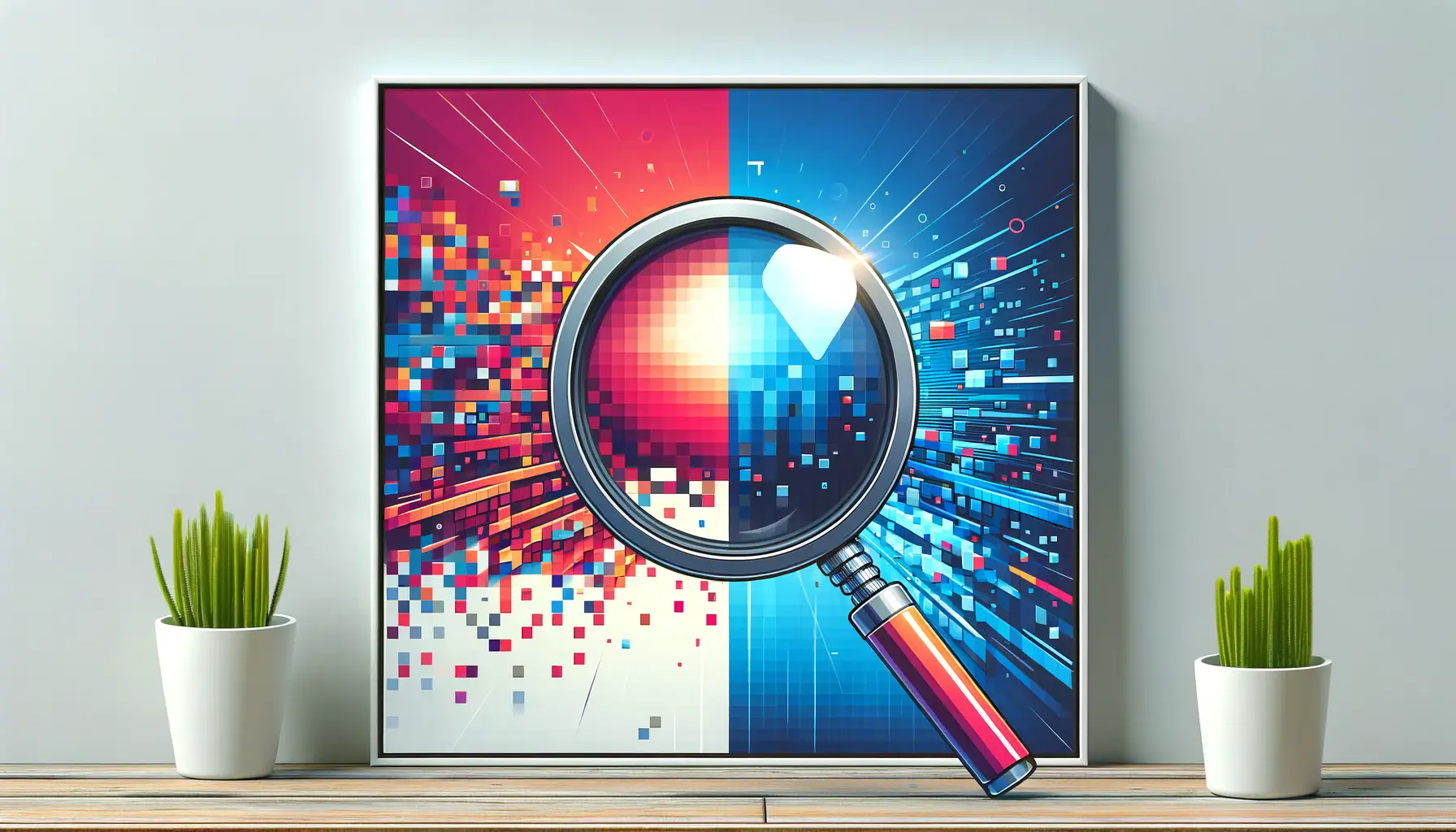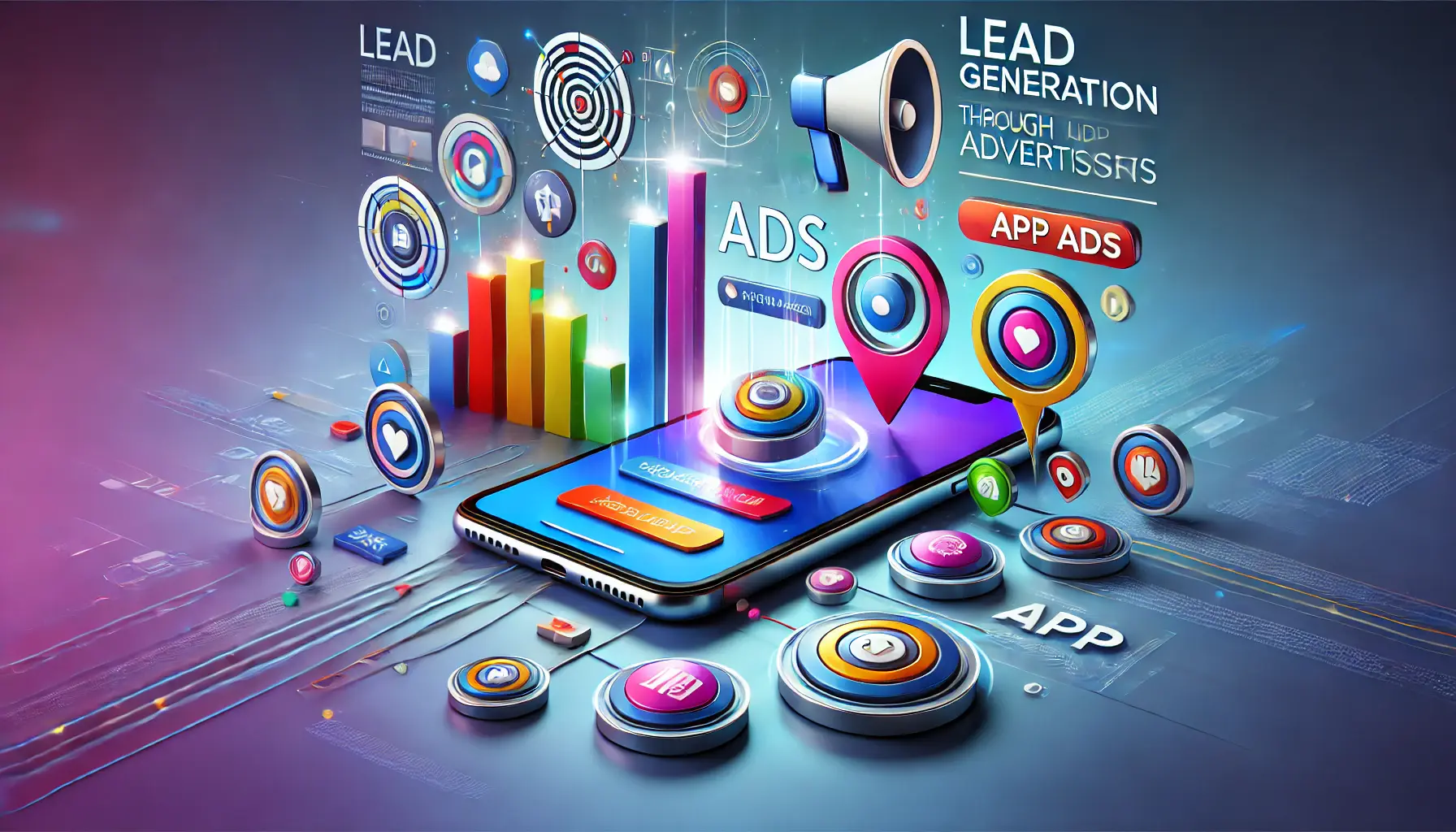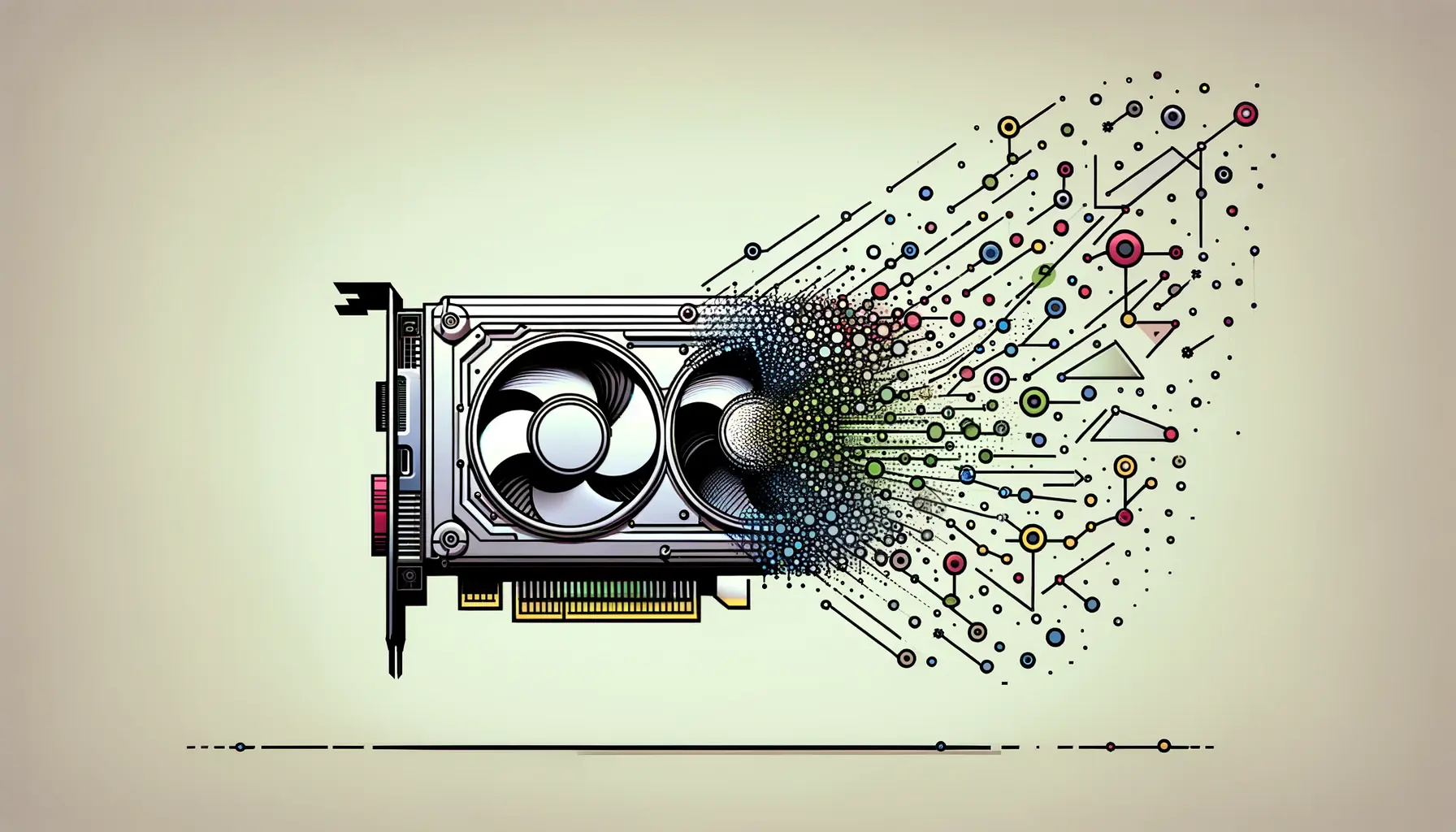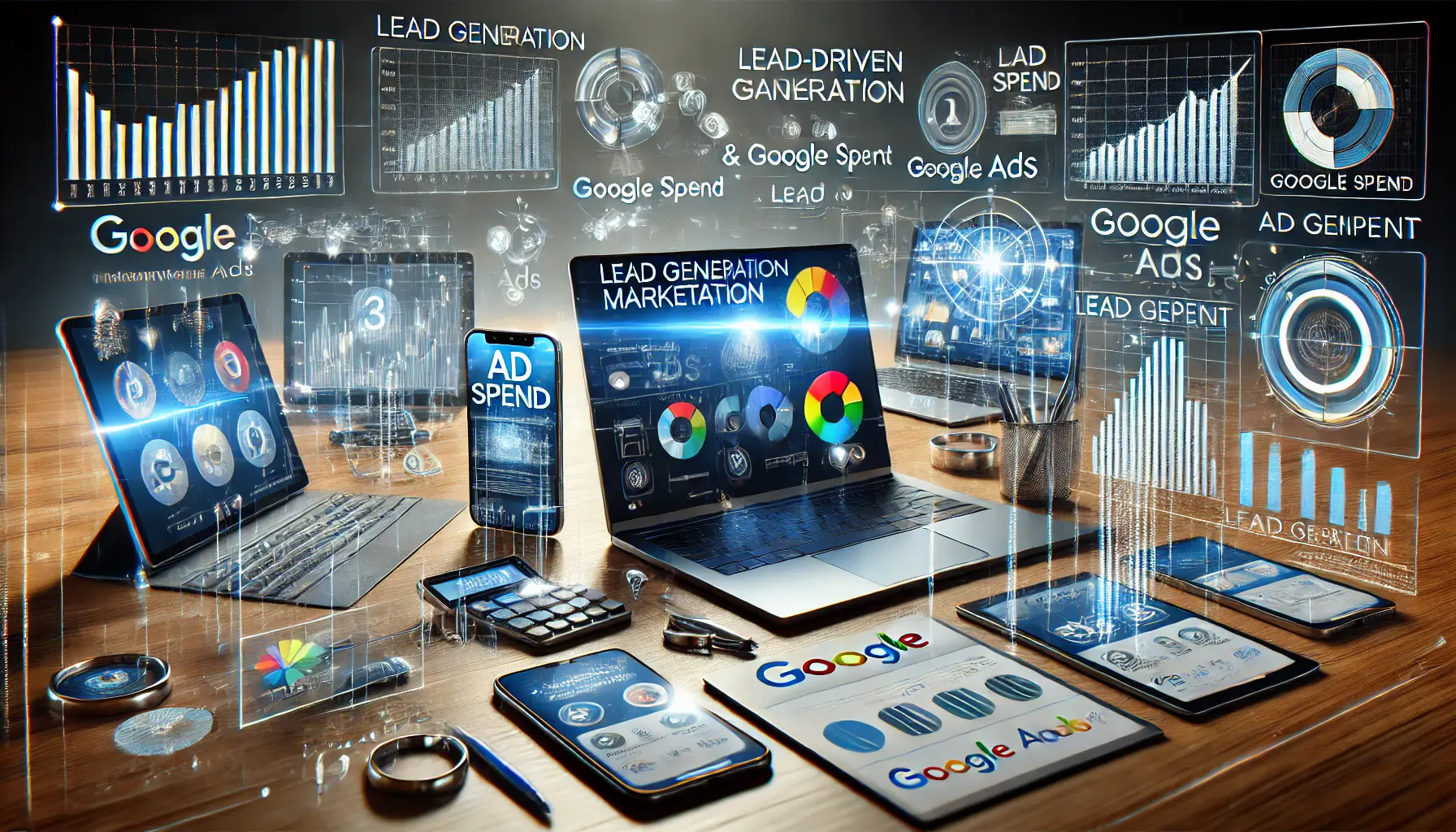Embarking on the journey of mastering DALL-E, OpenAI’s revolutionary image generation model, opens up a world of creativity and innovation.
This transformative technology has not only redefined the boundaries of artificial intelligence but has also provided artists, designers, and enthusiasts with a tool to convert textual descriptions into vivid, detailed images.
The essence of DALL-E lies in its ability to understand and interpret the nuances of language, transforming abstract concepts into tangible visual art.
This article aims to guide you through the intricacies of DALL-E, offering valuable insights and practical advice to harness the full potential of this cutting-edge technology.
As we delve into the world of DALL-E, it’s essential to grasp the significance of this tool in the broader context of AI-driven creativity.
Unlike traditional image editing software, DALL-E leverages deep learning algorithms to generate images from textual prompts, making it a powerful instrument for creative exploration.
This capability not only accelerates the creative process but also democratizes art creation, enabling individuals without formal artistic training to bring their visions to life.
Through this article, we’ll explore the various facets of DALL-E, from basic tutorials to advanced techniques, ensuring you have the knowledge to master image generation.
- Tutorials: Understanding the Basics of DALL-E
- Creating Your First DALL-E Image
- Advanced Techniques in DALL-E
- Collaborating with DALL-E for Creative Projects
- Overcoming Challenges and Limitations
- Exploring the Future of DALL-E and AI Art
- Practical Applications of DALL-E in Various Industries
- Embracing the Future with DALL-E
- DALL-E Image Generation FAQs
Tutorials: Understanding the Basics of DALL-E
What is DALL-E?
DALL-E, a portmanteau of Salvador Dalí and Pixar’s WALL-E, is an AI model developed by OpenAI that generates images from textual descriptions.
This groundbreaking technology uses a variant of the GPT-3 algorithm, tailored for visual creativity.
By analyzing and understanding the content and context of text prompts, DALL-E can produce images that range from realistic photographs to surreal artworks.
Its versatility and power lie in its ability to interpret complex and abstract prompts, making it an invaluable tool for artists, designers, and anyone interested in exploring the intersection of technology and art.
The introduction of DALL-E has sparked a revolution in digital art creation, offering a glimpse into the future of AI-assisted creativity.
Its ability to generate unique, high-quality images from simple text inputs has opened up new avenues for creative expression.
Whether you’re looking to create fantastical landscapes, detailed illustrations, or conceptual art, DALL-E provides the tools to turn your imagination into visual reality.
Getting Started with DALL-E
Embarking on your DALL-E journey begins with understanding its interface and functionalities.
The platform offers a user-friendly environment where you can experiment with various prompts to generate images.
Starting with DALL-E requires an OpenAI account, after which you’ll gain access to the platform and its features.
Familiarizing yourself with the types of prompts that DALL-E responds to effectively is crucial for producing the desired outcomes.
One of the first steps in mastering DALL-E is learning to craft detailed and descriptive prompts.
The specificity of your text can significantly influence the quality and relevance of the generated images.
Experimentation plays a key role in this process, as it allows you to explore the boundaries of DALL-E’s capabilities.
Through trial and error, you’ll discover the optimal ways to communicate your visual ideas to the AI, transforming abstract concepts into stunning visual art.
Remember, the journey to mastering DALL-E is a blend of creativity, experimentation, and continuous learning. Embrace the process, and let your imagination lead the way.
Creating Your First DALL-E Image
Entering the realm of DALL-E image generation is an exciting step towards unleashing your creative potential.
The process begins with formulating a text prompt that vividly describes the image you envision.
This initial step is crucial, as the clarity and detail of your prompt directly influence the outcome.
To create your first DALL-E image, follow these guidelines:
- Define Your Concept: Start with a clear idea of what you want to create. Whether it’s a surreal landscape, a futuristic cityscape, or a portrait in a specific art style, having a defined concept will guide your prompt creation.
- Craft a Detailed Prompt: Incorporate descriptive adjectives, specify colors, textures, and even the mood or atmosphere of the image. The more detailed your prompt, the better DALL-E can understand and visualize your idea.
- Experiment with Styles: DALL-E excels at generating images in various artistic styles. Experiment by including the names of art movements (e.g., impressionism, cubism) or famous artists (e.g., Van Gogh, Picasso) in your prompts to explore different visual aesthetics.
Once you’ve crafted your prompt, submit it to DALL-E and await the generation of your image.
This process usually takes a few seconds to a minute, depending on the complexity of the prompt.
Upon completion, DALL-E will present you with several interpretations of your prompt.
Select the one that best matches your vision, or use it as a starting point for further refinement.
Refining Your DALL-E Creations
While DALL-E can produce remarkable results on the first try, refining your images can elevate them to the next level.
DALL-E offers tools for editing and fine-tuning your creations:
- Inpainting: This feature allows you to modify specific areas of your image. By erasing a part of the image and describing what you want in its place, DALL-E can regenerate that section according to your new instructions.
- Outpainting: Extend the boundaries of your image by adding more content around the edges. This is particularly useful for expanding scenes or adding more elements to your composition.
- Variations: Generate variations of your selected image to explore different interpretations of your original prompt. This can lead to unexpected and inspiring results.
Through these editing features, DALL-E empowers you to refine and perfect your images, bringing them closer to your initial vision.
The ability to tweak and adjust your creations ensures that the final output not only meets but exceeds your expectations.
The key to mastering DALL-E lies in the art of prompt crafting and the willingness to experiment with the platform’s editing capabilities.
Advanced Techniques in DALL-E
As you become more familiar with DALL-E’s basic functionalities, exploring advanced techniques can further enhance your ability to create complex and nuanced images.
These techniques involve a deeper understanding of how DALL-E interprets prompts and how certain adjustments can significantly alter the outcomes.
Mastering these methods will allow you to unlock the full creative potential of DALL-E.
One of the most effective strategies for advanced DALL-E usage is the manipulation of prompt syntax.
The way you structure your prompt can have a profound impact on the generated image.
Here are some tips for advanced prompt crafting:
- Negative Prompting: Specify what you don’t want in the image by using phrases like “without any” or “excluding.” This can help refine the results by preventing unwanted elements from appearing.
- Combining Concepts: Merge multiple ideas or themes into a single prompt to create complex images. For example, “a cyberpunk cityscape with art nouveau influences under a twilight sky” combines several distinct concepts into one coherent vision.
- Emulating Techniques: Request specific artistic techniques or effects, such as “chiaroscuro lighting,” “pointillism,” or “watercolor washes,” to influence the style and execution of the image.
Utilizing Contextual References
Incorporating references to well-known cultural, historical, or literary contexts can also guide DALL-E towards more targeted and relevant outputs.
Mentioning specific landmarks, historical periods, or literary scenes can anchor your prompts in recognizable settings, enriching the generated images with a sense of place and narrative.
- Historical Context: Including time periods or historical events, like “Victorian London” or “the Roaring Twenties,” can imbue your images with the essence of that era.
- Literary References: Drawing on famous literature, myths, or folklore can add depth and narrative to your images. For instance, “a scene from Alice in Wonderland” or “Odysseus’ journey home” provides a rich backdrop for DALL-E to explore.
Exploring Abstract Concepts
Another advanced technique involves translating abstract concepts or emotions into visual form.
This requires a creative approach to prompt writing, where you describe intangible ideas in ways that DALL-E can interpret visually.
- Emotional Atmosphere: Describing the mood or emotional tone of the image, such as “melancholic,” “euphoric,” or “tense,” can influence the color palette, composition, and overall feel of the image.
- Conceptual Ideas: Attempting to visualize concepts like “the passage of time,” “isolation,” or “joy” challenges DALL-E to represent these abstract ideas in creative ways.
Advanced DALL-E techniques require a blend of precision in language and openness to experimentation. The more you practice and experiment with different approaches, the more adept you’ll become at steering DALL-E towards your desired outcomes.
Collaborating with DALL-E for Creative Projects
The advent of DALL-E has not only revolutionized the way we think about art and creativity but also opened up new avenues for collaboration between humans and AI.
By integrating DALL-E into your creative projects, you can push the boundaries of conventional art forms and explore new dimensions of expression.
This section delves into how DALL-E can be a collaborative partner in various creative endeavors.
Whether you’re an artist, a designer, a writer, or a creative professional, DALL-E offers a unique opportunity to augment your creative process.
Here are some ways to effectively collaborate with DALL-E:
- Concept Art Creation: Use DALL-E to generate concept art for video games, movies, or graphic novels. By providing detailed prompts, you can visualize characters, settings, and objects, speeding up the pre-production phase.
- Illustrating Written Content: For authors and content creators, DALL-E can bring written narratives to life by illustrating scenes, characters, or abstract concepts described in your stories or articles.
- Design Inspiration: Designers can leverage DALL-E for brainstorming and inspiration. Generate a series of images based on various prompts to explore different design directions for projects like branding, product design, or fashion.
Enhancing Visual Content with DALL-E
In the realm of digital marketing and social media, captivating visual content is key to engaging audiences.
DALL-E can be instrumental in creating eye-catching graphics, banners, and images that resonate with your target demographic.
By inputting prompts that reflect your brand’s tone and message, you can produce bespoke visuals that stand out in a crowded digital landscape.
- Social Media Campaigns: Generate unique and thematic images for social media posts, ads, or campaigns. Tailor your prompts to align with specific campaign themes or marketing objectives.
- Website Imagery: Elevate your website’s visual appeal with custom illustrations and graphics created by DALL-E. From homepage banners to blog post images, DALL-E can help maintain a cohesive visual identity across your site.
Interactive Art and Experiences
DALL-E’s capabilities also extend to the creation of interactive art and digital experiences.
Artists and developers can create dynamic installations or web experiences that incorporate DALL-E-generated images in response to user input or real-time data.
This fusion of AI and interactive design opens up new possibilities for immersive and personalized art experiences.
- Interactive Installations: Design installations where audience input via text prompts generates live DALL-E artworks, creating a participatory and ever-changing art piece.
- Personalized Digital Experiences: Develop web applications or digital platforms that use DALL-E to create personalized images based on user preferences or inputs, enhancing user engagement.
Integrating DALL-E into your creative projects not only enhances the creative output but also fosters a collaborative synergy between human creativity and AI’s generative capabilities.
Overcoming Challenges and Limitations
While DALL-E’s capabilities are impressive, working with this AI model comes with its own set of challenges and limitations.
Understanding these hurdles is crucial for effectively leveraging DALL-E in your creative projects.
By anticipating potential issues and knowing how to navigate them, you can maximize the benefits of DALL-E while minimizing frustrations.
One of the primary challenges is the unpredictability of image generation.
Despite providing detailed prompts, DALL-E might produce results that don’t align with your expectations.
This section explores strategies for overcoming common challenges and pushing the boundaries of what DALL-E can achieve.
Refining Prompts for Better Results
When DALL-E generates images that miss the mark, refining your prompts is often the key to improvement.
This involves tweaking the language, adding or removing details, and experimenting with different descriptive techniques.
Understanding DALL-E’s interpretation of certain words or phrases can help you adjust your prompts for more accurate results.
- Use Clear and Concise Language: Avoid ambiguity in your prompts. Be as specific as possible about what you want to see in the image.
- Iterate and Experiment: Don’t hesitate to generate multiple iterations of an image. Each attempt can provide insights into how DALL-E responds to your prompts, guiding you toward more effective phrasing.
Addressing Ethical Considerations
Another challenge involves navigating the ethical implications of AI-generated art.
As DALL-E democratizes art creation, questions arise about originality, copyright, and the impact on traditional artists.
It’s important to use DALL-E responsibly, acknowledging its role as a tool for augmentation rather than replacement.
- Respect Copyright and Originality: Ensure that your use of DALL-E respects intellectual property rights and does not infringe on the work of others.
- Attribute AI Collaboration: When sharing DALL-E-generated images, consider acknowledging the use of AI in the creative process. This transparency can foster a healthy discourse on the role of AI in art.
Technical Limitations and Solutions
Technical limitations, such as image resolution and the handling of complex prompts, also pose challenges.
While DALL-E continues to evolve, current limitations can sometimes restrict the scope of what can be achieved.
Staying informed about updates and new features can help you adapt to these limitations.
- Optimize Image Quality: Explore techniques for enhancing the resolution of DALL-E-generated images, such as using external tools for upscaling.
- Break Down Complex Prompts: For intricate concepts, consider breaking down the prompt into simpler components and generating images for each. These can then be combined or used as inspiration for a final piece.
Assuming that DALL-E will perfectly understand and execute every prompt on the first try is a common misconception. Embracing a mindset of exploration and adaptation is key to overcoming challenges.
Exploring the Future of DALL-E and AI Art
The rapid advancements in AI technology, exemplified by tools like DALL-E, are reshaping the landscape of art and creativity.
As we look to the future, the potential for AI in the art world continues to expand, promising new possibilities for creators and audiences alike.
This evolution raises intriguing questions about the role of AI in art, the nature of creativity, and the future relationship between humans and machines in the creative process.
As DALL-E and similar technologies evolve, we can anticipate several developments that will further enhance their impact on art and design.
These advancements will not only refine the capabilities of AI in generating art but also deepen the collaboration between AI and human creativity.
Integration with Other Creative Tools
One of the exciting prospects for the future of DALL-E is its integration with other digital art and design tools.
This convergence could streamline the creative workflow, allowing artists and designers to seamlessly transition between AI-generated content and traditional digital art software.
Such integration would enable a more fluid creative process, where AI-generated images can be further refined, edited, or incorporated into larger projects.
- Enhanced Collaboration: The integration of DALL-E with design platforms could facilitate new forms of collaboration, where AI-generated elements are combined with human artistry to create hybrid works.
- Customization and Control: Future versions of DALL-E may offer more granular control over the image generation process, allowing creators to specify styles, techniques, and even emulate the work of specific artists with greater accuracy.
Expanding the Boundaries of Creativity
The continued development of DALL-E also promises to push the boundaries of what is considered possible in art and design.
By providing creators with the ability to visualize the previously unimaginable, AI can act as a catalyst for innovation and experimentation.
This could lead to the emergence of new art forms and styles that blend human creativity with the unique capabilities of AI.
- New Artistic Movements: The unique aesthetic qualities of AI-generated art could give rise to new movements and styles, characterized by their fusion of human and machine creativity.
- Democratization of Art: As AI art tools become more accessible, the ability to create compelling visual content will extend to a broader audience, democratizing the art creation process.
Addressing Ethical and Philosophical Questions
As AI takes on a more prominent role in art creation, it also prompts us to reconsider our understanding of art, creativity, and authorship.
The future of DALL-E and AI art will likely be accompanied by ongoing discussions about the ethical implications of AI-generated content, the value of human versus machine creativity, and the rights associated with AI-created works.
Navigating these questions will be crucial as we forge a new paradigm for art in the age of artificial intelligence.
- Authorship and Ownership: Clarifying the legal and moral considerations surrounding the ownership of AI-generated art will be essential as these technologies become more integrated into the creative industries.
- Cultural Impact: The influence of AI on art and culture warrants thoughtful examination, as it reflects broader shifts in our relationship with technology and its role in society.
The future of DALL-E and AI art is not just about technological innovation but also about exploring the profound ways in which artificial intelligence can augment, challenge, and expand the human creative spirit.
Practical Applications of DALL-E in Various Industries
The versatility and power of DALL-E extend beyond the realms of art and design, offering practical applications across various industries.
By transforming textual descriptions into detailed images, DALL-E can support a wide range of professional tasks, from content creation to product design.
This section explores how different sectors can leverage DALL-E to enhance their operations, innovate in their field, and engage their audiences more effectively.
Marketing and Advertising
In the marketing and advertising industry, visual content plays a crucial role in capturing attention and conveying messages.
DALL-E can revolutionize this sector by generating unique, eye-catching images tailored to specific campaigns or branding efforts.
Marketers can use DALL-E to quickly produce visuals for social media posts, advertisements, or promotional materials, significantly reducing the time and cost associated with traditional content creation.
- Customized Campaign Imagery: Generate images that perfectly match the theme and tone of marketing campaigns, ensuring brand consistency across all materials.
- Dynamic Content Creation: Quickly adapt and create new visual content in response to trends or audience feedback, keeping marketing efforts agile and relevant.
Education and Training
DALL-E can also play a transformative role in education and training, providing educators with a tool to create custom illustrations, diagrams, and visual aids.
These visuals can enhance learning materials, making complex concepts easier to understand and more engaging for students.
Additionally, DALL-E can support the development of interactive educational content, such as simulations or visual storytelling.
- Illustrated Educational Content: Create detailed diagrams, charts, and illustrations for textbooks, online courses, or presentations.
- Visual Storytelling: Generate images to accompany educational stories or scenarios, adding a visual dimension to learning experiences.
Product Design and Development
In the field of product design and development, DALL-E can facilitate the ideation and conceptualization process.
Designers can use DALL-E to visualize new products, packaging designs, or branding elements based on descriptive prompts.
This capability allows for rapid prototyping and exploration of design options, accelerating the development cycle and encouraging creative experimentation.
- Rapid Prototyping: Generate visual concepts for new products or features, enabling quick iteration and feedback loops.
- Visual Branding Elements: Create unique branding materials, such as logos, packaging designs, and promotional visuals, tailored to specific brand identities.
Entertainment and Media
The entertainment and media industry can benefit from DALL-E’s ability to generate diverse visual content, from concept art for films and video games to illustrations for books and magazines.
By providing a fast and cost-effective way to produce high-quality visuals, DALL-E can support the creative processes behind storytelling, world-building, and character design.
- Concept Art Creation: Visualize settings, characters, and objects for movies, video games, and other media projects, enhancing the pre-production phase.
- Illustrative Content: Produce artwork for books, magazines, and online publications, enriching narratives with compelling visual elements.
The practical applications of DALL-E across industries highlight its potential to serve as a versatile tool for innovation, creativity, and efficiency. By embracing DALL-E, professionals across sectors can unlock new possibilities for visual content creation and communication.
Embracing the Future with DALL-E
The journey through the capabilities, applications, and potential of DALL-E reveals a future where creativity and technology converge in unprecedented ways.
As we’ve explored, DALL-E is not just a tool for generating images; it’s a catalyst for innovation across various industries, a companion for artists and creators, and a gateway to new forms of expression and communication.
The implications of mastering DALL-E tutorials extend far beyond learning to navigate a software interface—they involve stepping into a new era of creative possibility.
The Transformative Impact of DALL-E
From marketing to education, product design to entertainment, DALL-E’s influence is vast and varied.
It offers a glimpse into a future where AI assists in bringing our most abstract ideas to life, democratizing art creation and opening up new avenues for visual storytelling.
The practical applications of DALL-E we’ve discussed underscore its potential to revolutionize how we approach challenges and tasks across different sectors, making it an invaluable asset in our digital toolkit.
Navigating the Path Forward
As we continue to explore and understand DALL-E’s capabilities, it’s clear that the journey is just beginning.
The evolution of AI and its role in art and creativity is an ongoing dialogue, one that raises as many questions as it answers.
The future of DALL-E and similar technologies will undoubtedly bring further advancements, challenges, and opportunities.
Embracing these with an open mind and a willingness to experiment will be key to unlocking the full potential of AI in creative expression.
- The importance of ethical considerations and responsible use of AI in art cannot be overstated. As we harness DALL-E’s capabilities, maintaining a balance between innovation and integrity will be crucial.
- Continued learning and adaptation will be necessary as DALL-E evolves. Staying informed about the latest developments and mastering new features and techniques will enable creators to stay at the forefront of AI-assisted art.
- The collaboration between human creativity and AI offers a wealth of possibilities. By working alongside AI, we can enhance our creative processes, explore new artistic horizons, and create works that were once beyond our imagination.
In conclusion, DALL-E tutorials represent the first step on a journey of discovery and innovation.
As we master image generation with DALL-E, we’re not just learning to use a tool; we’re learning to navigate the future of creativity itself.
The potential of DALL-E to transform industries, redefine art, and inspire new forms of expression is immense.
By embracing this technology, we open ourselves up to a world of possibilities, ready to explore the uncharted territories of creativity and innovation that lie ahead.
DALL-E Image Generation FAQs
Explore common inquiries about DALL-E’s image generation capabilities to enhance your understanding and mastery of this innovative tool.
Yes, DALL-E can convert your image into a different style by interpreting descriptive prompts that specify the desired artistic style.
The DALL-E API is accessible through OpenAI, allowing integration of state-of-the-art image generation into your products or services.
Yes, DALL-E is available to the public. Users can access it through OpenAI’s platform, subject to certain usage policies and credit systems.
For better results, use detailed and descriptive prompts, focusing on clarity and specificity to guide DALL-E’s image generation process.
While DALL-E-generated images can be used for various purposes, it’s important to adhere to OpenAI’s content policy and copyright laws.
DALL-E processes complex requests by analyzing the prompt’s components, but success varies based on the specificity and clarity of the prompt.
Limitations include handling highly specific or abstract concepts, resolution constraints, and the interpretation of complex prompts.
Yes, DALL-E can generate images in various styles, from realistic to abstract, based on the descriptive cues provided in the prompt.
